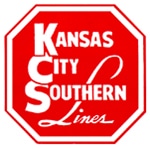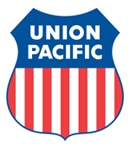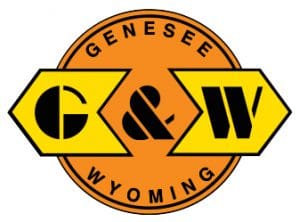Net Earnings: Increased 34 percent to $1.4 billion
Revenue: Increased 16 percent to $6.1 billion
Operating Income: Increased 9 percent to $2.1 billion
Operating Expenses: Increased 20 percent to $4.0 billion
Operating Ratio: Increased 2.1 points to 64.5 percent
Click here to read BNSF’s full earnings report.
Net Earnings: Increased 18 percent to C$1,134 million
Earnings Per Share: Diluted earnings per share increased 21 percent to C$1.54
Revenue: Increased 14 percent to a record C$3,688 million
Operating Income: Increased 8 percent to C$1,492 million
Operating Expenses: Increased 19 percent to C$2,196
Operating Ratio: Increased 2.3 points to 59.5 percent
Click here to read CN’s full earnings report.
Net Earnings: Increased 22 percent to C$622 million
Earnings Per Share: Diluted earnings per share increased 24 percent to a record C$4.35
Revenue: Increased 19 percent to a record C$1.9 billion
Operating Income: Increased 27 percent to C$790 million
Operating Expenses: Increased 14 percent to C$1,108 million
Operating Ratio: Decreased 270 points to a record low of 58.3 percent
Click here to read CP’s full earnings report.
Net Earnings: Increased 106 percent to $894 million
Earnings Per Share: Increased to $1.05 per share from $0.51 per share
Revenue: Increased 14 percent to $3.13 billion
Operating Income: Increased 49 percent to $1.29 billion
Operating Expenses: Declined 2 percent to $1,84 billion
Operating Ratio: Improved 970 basis points to a record 58.7 percent
Click here to read CSX’s full earnings report.
Net Earnings: Increased to $174 million from $129 million
Earnings Per Share: Diluted earnings per share increased 38 percent to $1.70
Revenue: Increased 6 percent to a record $699 million
Operating Income: Increased 14 percent to $265 million
Operating Expenses: Increased to $433.6 million from $422.8 million
Operating Ratio: Improved 2.4 basis points to 62 percent
Click here to read KCS’s full earnings report.
Net Earnings: Increased 39 percent to $702 million
Earnings Per Share: Diluted earnings per share increased 44 percent to a third quarter record of $2.52
Revenue: Increased 10 percent to $2.9 billion
Operating Income: Increased 14 percent to a third quarter record of $1.0 billion
Operating Expenses: Increased 9 percent to $1.9 billion
Operating Ratio: Declined 1.1 basis points to a record 65.4 percent
Click here to read NS’s full earnings report.
Net Earnings: Increased from $1.2 billion to $1.6 billion
Earnings Per Share: Increased 43 percent from $1.50 to a record $2.15 per diluted share
Revenue: Increased 10 percent to $5.9 billion
Operating Income: Increased 9 percent to $2.3 billion
Operating Expenses: Increased 10 percent from $3.3 billion to $3.7 billion
Operating Ratio: Stayed flat at 61.7 percent
Click here to read UP’s full earnings report.
Financial results of the largest shortline:
Net Earnings: Increased to $69.6 million from $50.2 million
Earnings Per Share: Increased 45 percent to $1.16
Revenue: Increased 11.5 percent to $355.7 million from $318.9 million
Operating Income: Increased 24.7 percent to $102.5 million, up from $82.2 million
Operating Expenses: Increased to $253,225 from $236,724
Operating Ratio: Improved 3 points to 71.2 percent from 74.2 percent
Click here to read G&W’s full earnings report.
Notes:
- Operating ratio is a railroad’s operating expenses expressed as a percentage of operating revenue, and is considered by economists to be the basic measure of carrier profitability. The lower the operating ratio, the more efficient the railroad.
- All comparisons are made to 2017’s third quarter financial results for each railroad.
- Figures for G&W are for North American operations only with the exception of Net Earnings & Earnings Per Share, which includes all G&W operations, as solely North American figures were unavailable in these categories.






 Canadian Pacific Railway reports record financial results for the third quarter. The company claims the third quarter results are the strongest in the company’s history.
Canadian Pacific Railway reports record financial results for the third quarter. The company claims the third quarter results are the strongest in the company’s history. Union Pacific railroad reports record financial results are at an all-time high for the third quarter in a press release Oct. 23. Net income came in at a $1.4 billion or $1.53 per diluted share, a 23 percent improvement. Last year’s results for the same quarter were at $1.15 billion or $1.24 per diluted share.
Union Pacific railroad reports record financial results are at an all-time high for the third quarter in a press release Oct. 23. Net income came in at a $1.4 billion or $1.53 per diluted share, a 23 percent improvement. Last year’s results for the same quarter were at $1.15 billion or $1.24 per diluted share.